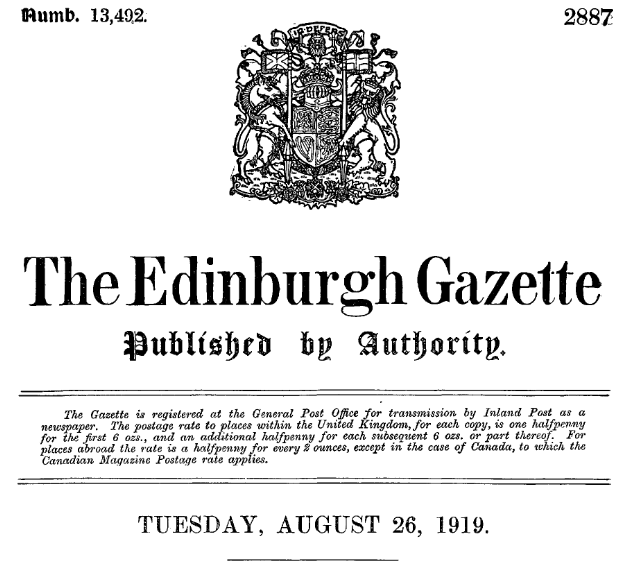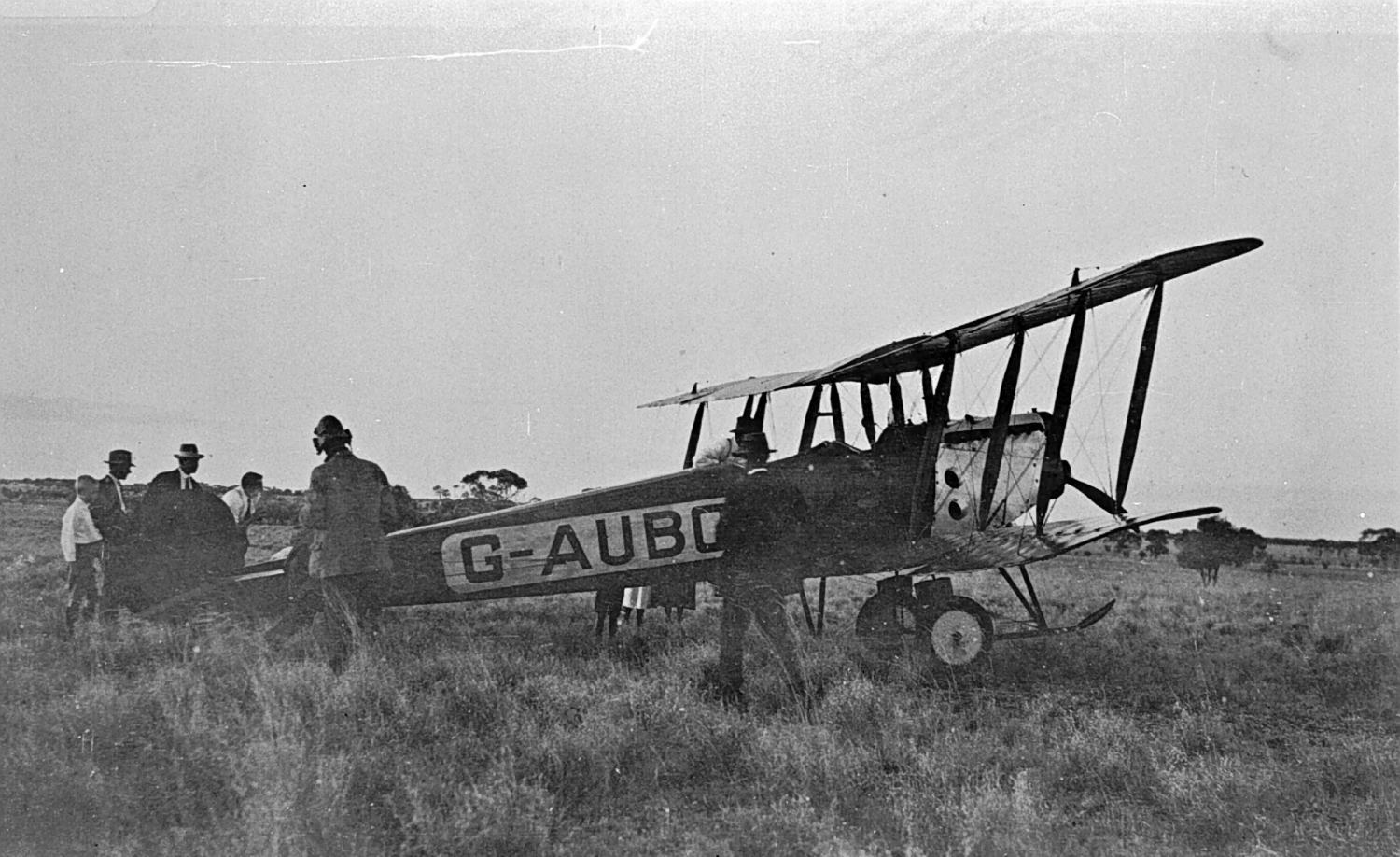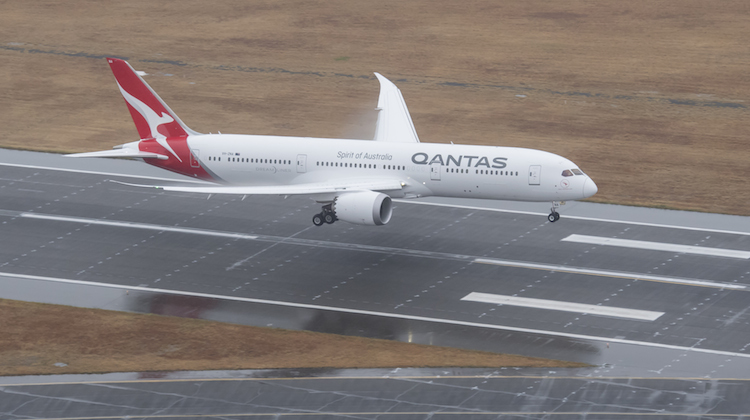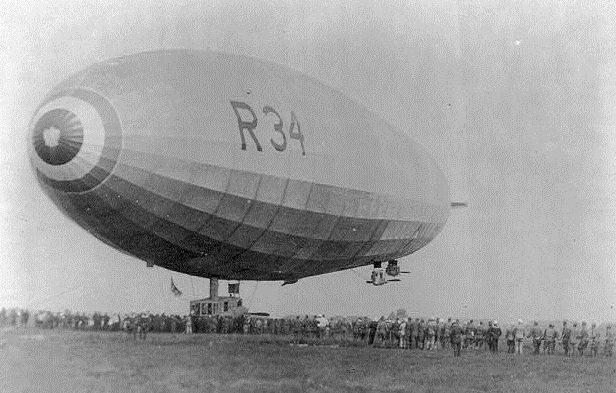
2–6 July 1919: Two weeks after Alcock and Brown made the first non-stop transatlantic airplane flight, the Royal Air Force rigid airship R 34 landed at Mineola, Long Island, New York, completing the first east-to-west Atlantic crossing by air. The airship was under the command of Major George Herbert Scott, A.F.C., R.A.F. The total complement, including passengers, was 30 persons.
The 108 hour, 12 minute flight started from East Fortune Airship Station near Edinburgh, Scotland at 2:38 a.m., British Summer Time (1:38 a.m., Greenwich mean time) on Wednesday, 2 July. R 34 arrived at Mineola at 9:54 a.m. Eastern Daylight Savings Time (1:54 p.m. G.M.T.) on Sunday, 6 July. According to records of the Fédération Aéronautique Internationale, the distance flown by R 34 was 5,797 kilometers (3,602 miles). On arrival, the airship had only 40 minutes of fuel remaining.
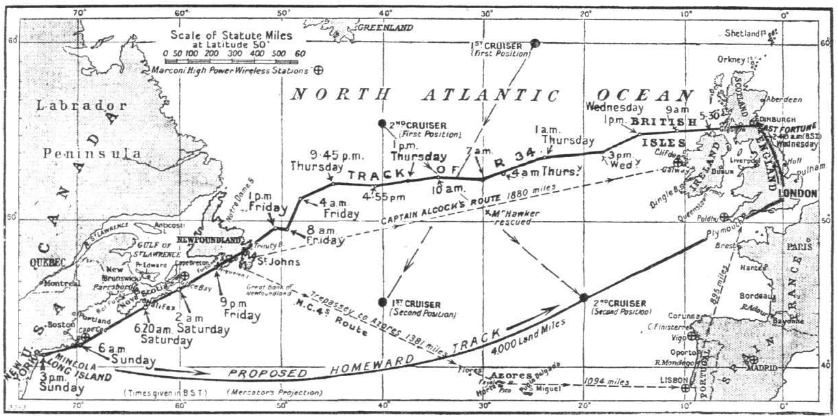

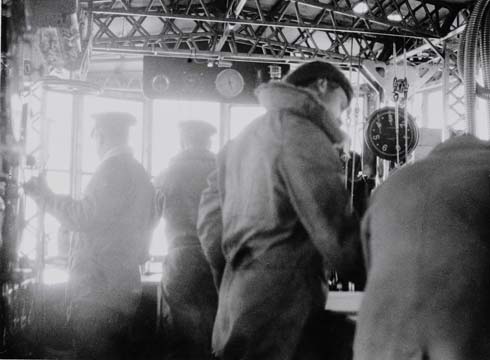

R 34 made the return flight to England, 10–13 July 1919, in 75 hours, 3 minutes.
Major Scott was appointed Commander of the Most Excellent Order of the British Empire.
CENTRAL CHANCERY OF THE ORDERS OF KNIGHTHOOD.
St. James’s Palace, S.W. 1,
23rd August 1919.
The KING has been graciously pleased to give orders for the following appointment to the Most Excellent Order of the British Empire, in recognition of distinguished services to Aviation. :—
To be a Commander of the Military Division of the Said Most Excellent Order :—
Major George Herbert Scott, A.F.C., Royal Air Force, Commander of H.M. Airship R/34 on the outward voyage to the United States of America and and also on the homeward journey.
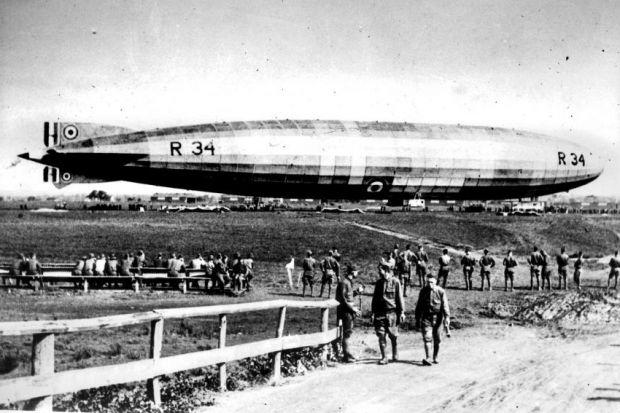
Colonel (A./Brig.-Genl.) Edwards Maitland Maitland, C.M.G., D.S.O., Capt. (A./Major) Gilbert George Herbert Cooke, D.S.C., Lieutenant Guy Harris and 2nd Lieutenant John Durham Shotter were each awarded the Air Force Cross.
The Air Force Medal was awarded to Flight-Sergeant William Rose Gent, Sergt.-Maj. II. Walter Robert Mayes, D.S.M., Flight-Sergeant Walter James Robinson, Flight-Sergeant Reginald William Ripley, Flight-Sergeant Norman Albert Scull, and Sergeant Herbert Murray Watson, D.S.M.
¹ On 1 April 1918, the Royal Naval Air Service and the Royal Flying Corps were combined to form the Royal Air Force.
© 2018, Bryan R. Swopes
